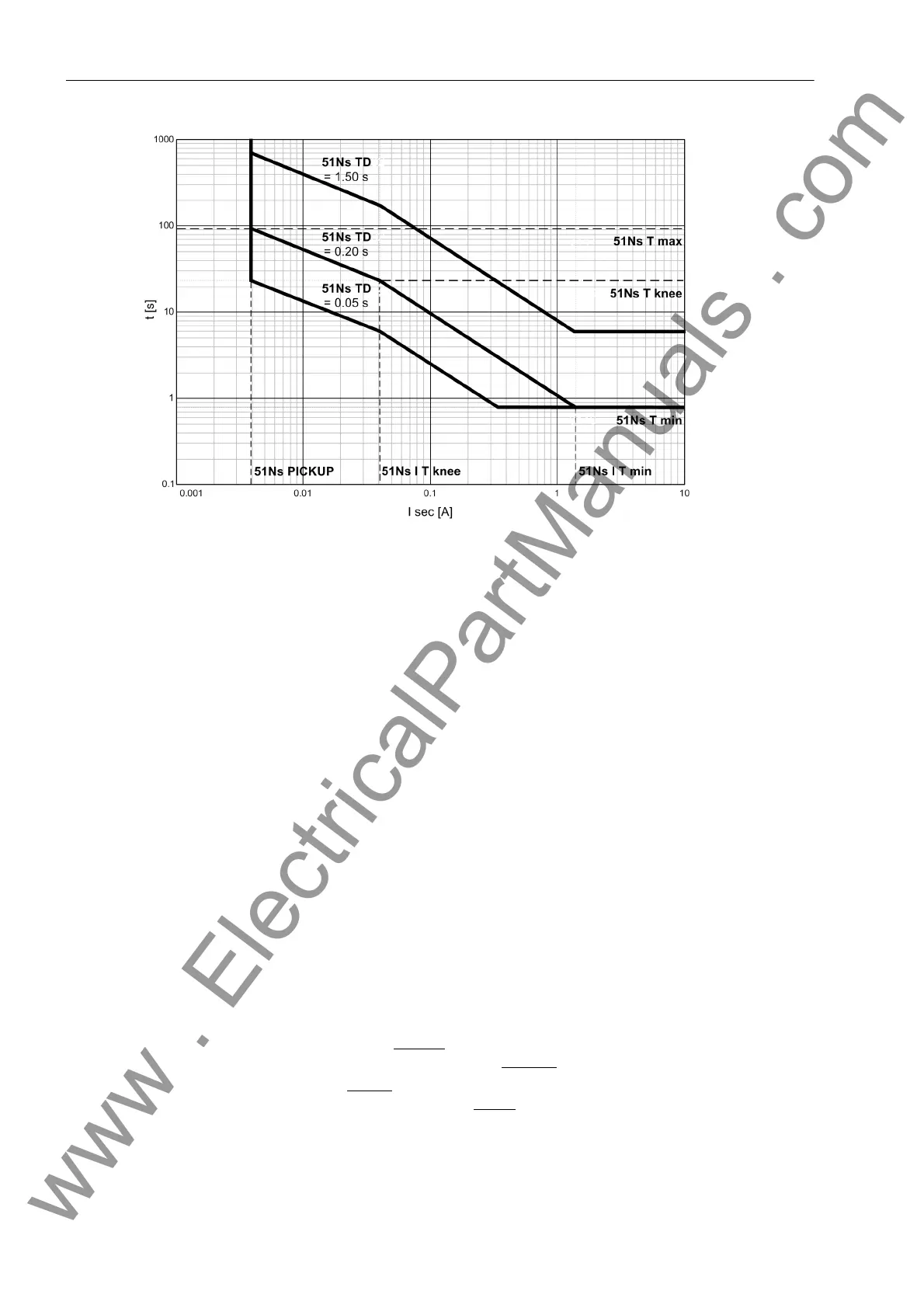Functions
2.12 Ground Fault Protection 64, 67N(s), 50N(s), 51N(s)
SIPROTEC, 7SJ62/64, Manual
C53000-G1140-C207-2, Release date 01.2008
234
Figure 2-90 Trip-time characteristics of the inverse-time ground fault protection 51Ns with logarithmic
inverse characteristic with knee point (example for 51Ns = 0.004 A)
User-defined characteristic (Inverse Time)
User-defined characteristics are only used for the standard measurement method cos ϕ / sin ϕ (address
130 S.Gnd.F.Dir.Ch). During configuration of a user-defined characteristic, it should be noted that there is
a safety factor of approx. 1.1 between pickup and setting value - as is standard for inverse curves. This means
that pickup will only be initiated when current of 1.1 times the setting value flows.
The value pairs (current and time) are entered as multiples of the values at addresses 3119 51Ns PICKUP
and 3120 51NsTIME DIAL. Therefore, it is recommended that these addresses are initially set to 1.00 for sim-
plicity reasons. Once the curve has been entered, the settings at addresses 3119 and/or 3120 can be modified
if necessary.
The default setting of current values is ∞. They are, therefore, not enabled — and no pickup or tripping of these
protective functions will occur.
Up to 20 value pairs (current and time) may be entered at address 3131 M.of PU TD. The device then
approximates the characteristic, using linear interpolation.
The following must be observed:
• The value pairs should be entered in increasing sequence. If desired, fewer than 20 pairs can be entered.
In most cases, about 10 pairs is sufficient to define the characteristic accurately. A value pair which will not
be used has to be made invalid by entering "∞” for the threshold! The user must ensure that the value pairs
produce a clear and constant characteristic
The current values entered should be those from Table 2-4, along with the matching times. Deviating values
I/I
p
are rounded. This, however, will not be indicated.
Current below the current value of the smallest
curve point will not lead to an extension of the tripping time.
The pickup curve (see Figure 2-91) continues, from the smallest
current point parallel to the current axis.
Current flows greater than the highest
current value entered will not result in a reduced tripping time. The
pickup curve (see Figure 2-91) continues, from the largest
current point parallel to the current axis.
www . ElectricalPartManuals . com

